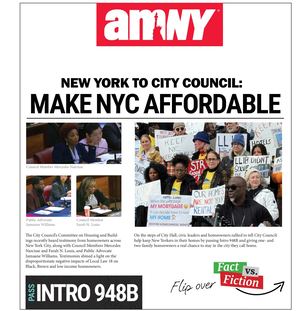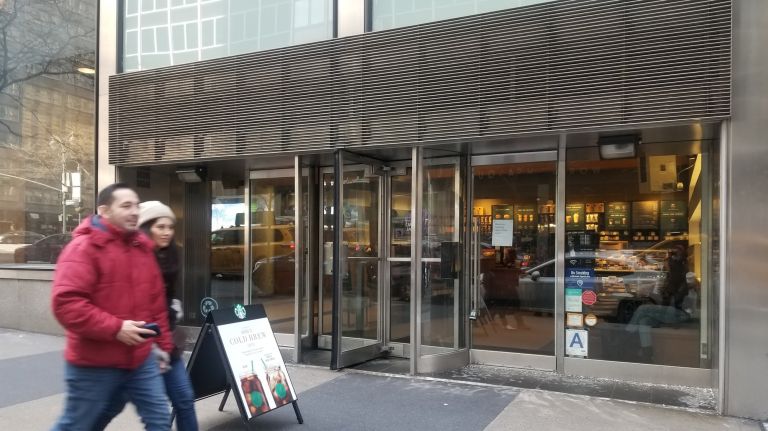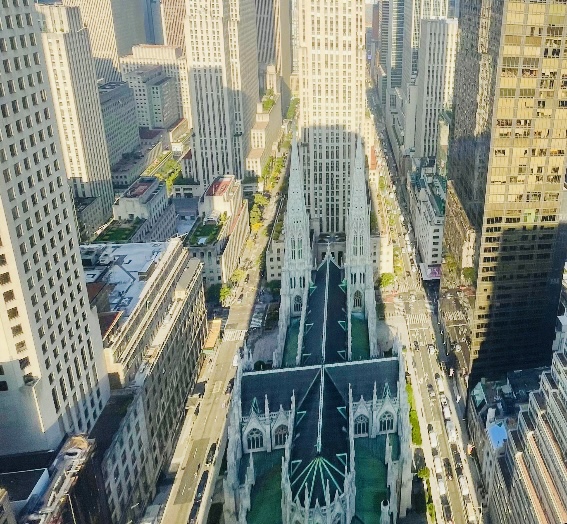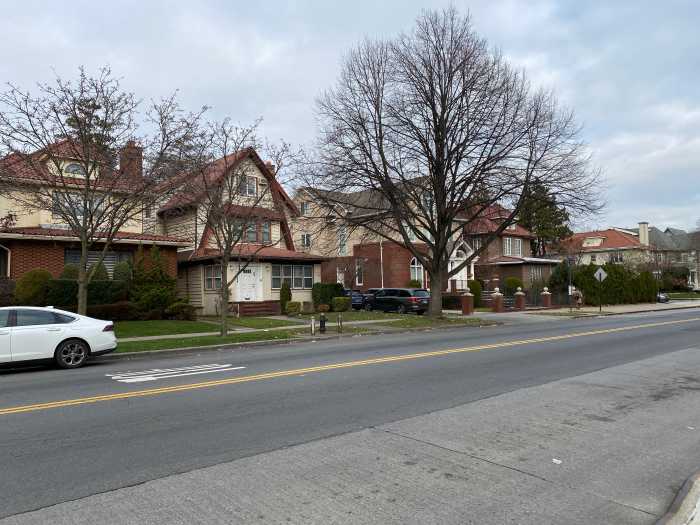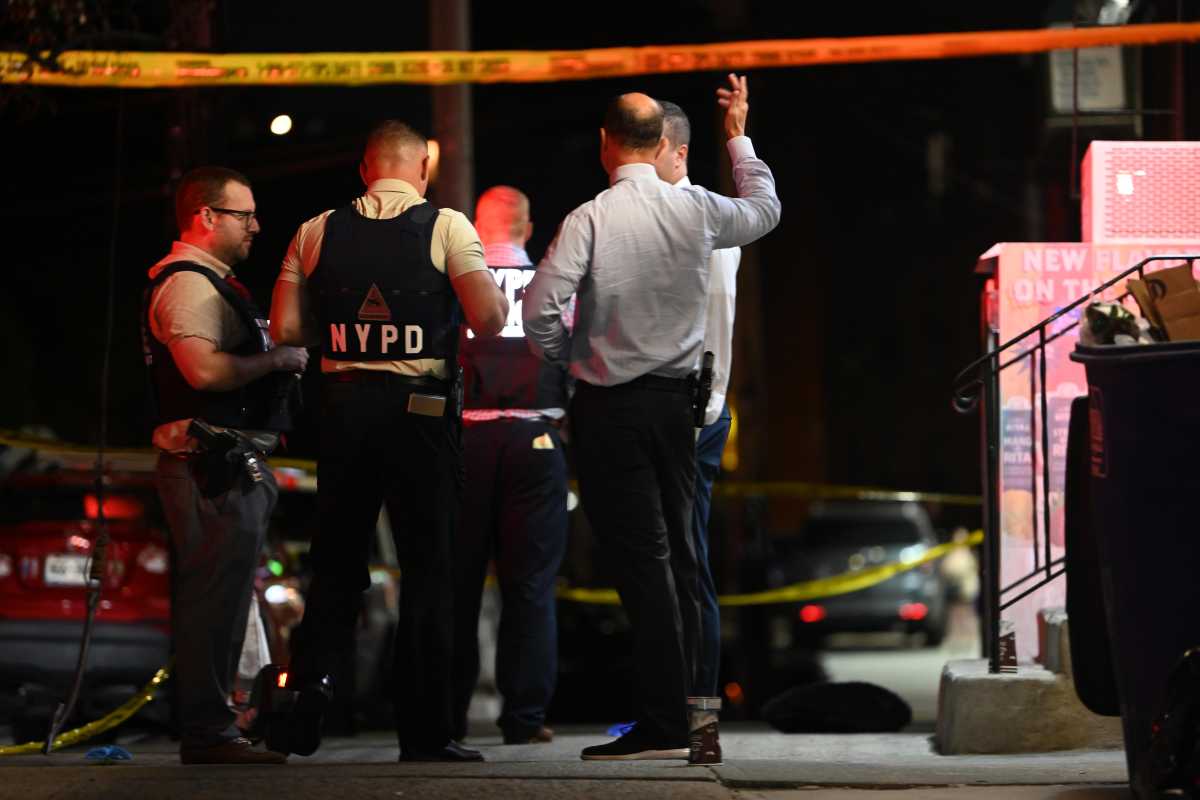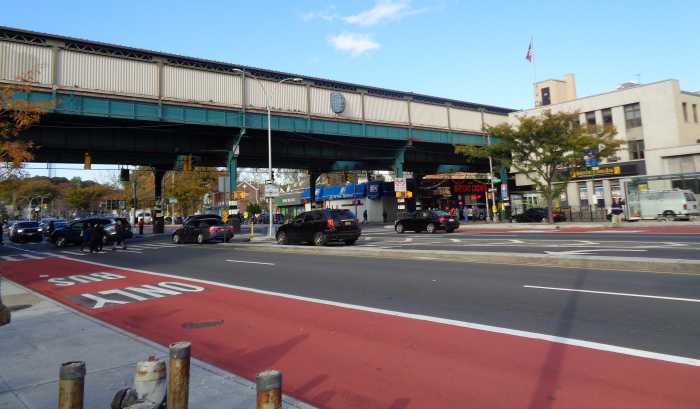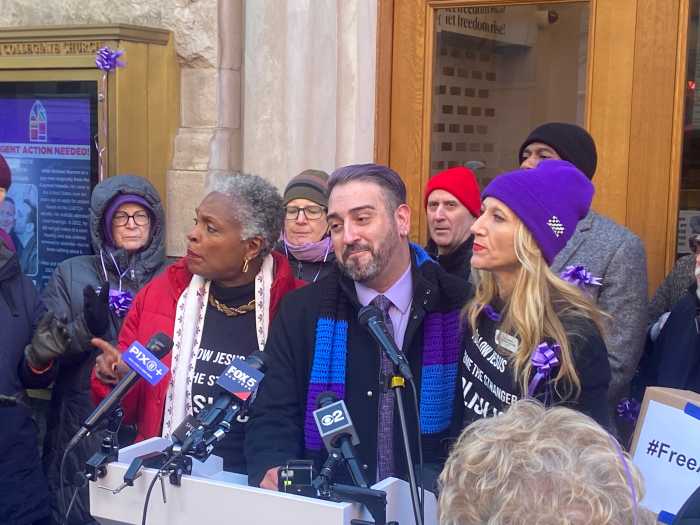
The gleaming 42nd Street entrance includes a message stating that the 26-story building’s lobby is open to the public.
But passersby are unlikely to know where, precisely, they are invited inside, unless they spot the roughly one-centimeter font on the office’s columns, which identifies the 120 Park Ave. plaza and the arcade framing it as a public amenity — a common arrangement for developers to enlarge their projects.
That plaza, whose owner did not respond to requests for comment, is not an anomaly along the eastern stretch of 42nd Street, where many sites seem to lack building address numbers.
For more than a decade, a few elected officials have been advocating for clearer address labeling, which culminated in a 2017 law increasing the maximum penalties imposed for related infractions.
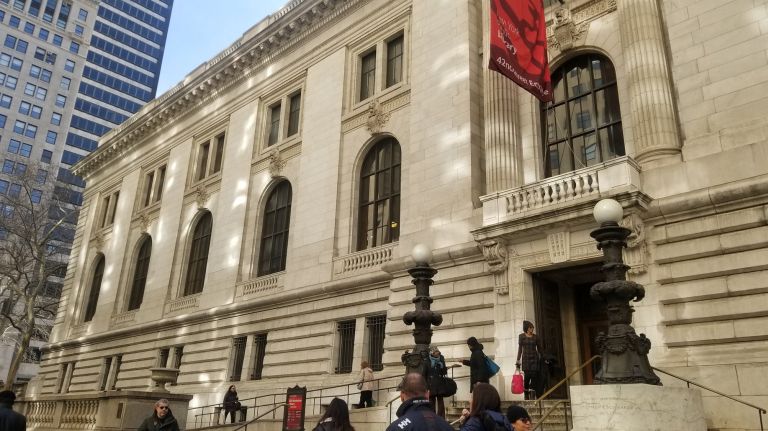
That measure, however, has not ushered in a uniform understanding of what is required, and the lawmaker who introduced it, City Councilman Jumaane Williams, said the government’s supervision of the matter remains insufficient.
"It sounds like it’s just not something that is taken seriously," Williams said of the city’s enforcement practices, which are initiated based on complaints. "It’s a pretty big issue. I think it goes from regular, daily annoyances — people trying to find entrances . . . people whose livelihood is to make deliveries quickly . . . to life and death, emergency (responders), who have to find addresses quickly and can’t."
While arguing for greater enforcement in 2010, then-Manhattan Borough President Scott Stringer’s office released a study of 13 corridors showing that roughly four of 10 buildings along those stretches did not display their addresses. East 42nd Street, between First and Sixth avenues, had the most missing displays, with nearly 55 percent of surveyed buildings lacking an address number, according to the study.
Roughly 53 percent of entrances along the same strip of 42nd Street lacked address numbers, according to a survey conducted by amNewYork over the past few weeks, which relied on Williams’ and Manhattan Borough President Gale Brewer’s explanation that the 2017-era law required signage for all doorways used day-to-day by pedestrians.
Some of the more prominent buildings accessible on 42nd Street were not adorned with numbers visible from that thoroughfare, including the public library’s Stephen A. Schwarzman Building, at 476 Fifth Ave., which opted not to comment. The Westin New York Grand Central hotel, at 212 E. 42nd St., also lacked numerals. A Marriott spokeswoman said the company had initiated a discussion with The Westin about the matter, and the hotel’s landlord, Davidson Kempner Capital Management, declined to comment.
Several storefronts lacked numerals near doors opening onto 42nd Street, including all four of the Starbucks, both Pret A Manger outposts and two Bank of America branches. Starbucks said it is in the process of adding address information and owners or property managers of the buildings it leased space from — Vornado, Eugene A. Hoffman Management, SL Green and Jones Lang LaSalle Americas — either declined to discuss the matter or did not respond to requests for comment.
Pret A Manger did not respond to a request for comment, nor did one of its landlords, Tishman Speyer.
Durst, which leases out Pret’s other location and one of the Bank of America spaces, said regulations, at least in Manhattan, only require a number for each assigned address on a side of a building that contains an entrance typically used by pedestrians. In the case of some larger, commercial buildings, with multiple retail tenants, each store would only need its own sign if it had been assigned an individual address, under Durst’s interpretation of the rules.
"Each demarcated address requires a house number, both retail spaces are in compliance," Durst spokesman Jordan Barowitz said in a statement.
Bank of America’s other landlord, Abramson Brothers Inc., did not return a message seeking comment.
A bank spokeswoman put forward a third understanding of the requirements, saying both branches complied with the law since address numbers were only required at buildings’ main entrances.
The Real Estate Board of New York, a landlord trade group, did not respond when asked to discuss the law.
However, the numbers need to be visible at all doorways typically used by pedestrians, according to staff for Williams and Brewer, who began attempting to update address display rules in 2004.
Brewer said more education about the rules, rather than enforcement, will help ease in more navigable streets.
"It gets huge interest from the public because they have had the same issue," Brewer said, noting that one of her employees has handed out 2,500 copies of the 2017 law. "I know this is a problem … I’m out looking for addresses all the time in the evening when I have to go to events."
First responders also spend time searching for addresses, according to Jeff Samerson, the office manager for Local 2507 of DC 37, which represents uniformed EMTs, paramedics and fire inspectors.
"EMS people, after a while, are familiar with their area, but we’re not always assigned to our area," said Samerson, who said workers are not frequently dispatched in new terrain. "If you put me in a new neighborhood, I wouldn’t know what’s what."
Williams said the city needed to more proactively enforce building number display protocols, rather than simply investigating when it receives related complaints.
Since 2014, the city’s Department of Housing Preservation and Development has issued 644 violations for missing building address numbers. As of late last month, 279 of these were still categorized as open because the violators had not certified that they fixed the issue.
The city Department of Buildings said it has issued six violations for a lack of numerals on commercial buildings since 2014, four of which have since been corrected, according to information posted on its website late last month.
DOB said judges at the Office of Administrative Trials and Hearings have the final say on whether the 2017 law has been violated.
"If the Council member is aware of any illegal conditions at any specific buildings, he should let us know about it," DOB spokesman Andrew Rudansky said in a statement. "We encourage all New Yorkers to report illegal building conditions so that the City can investigate."
